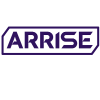Check It Off: A Comprehensive Onboarding Checklist for Your New Team Members
As a manager or team leader, one of your most important responsibilities is to onboard new team members. Onboarding is the process of integrating new hires into your team and business, and ensuring that they have the tools, resources, and information they need to be successful in their new roles.
A comprehensive onboarding checklist can help you ensure that new team members have a smooth and productive transition into your business. According to a recent Gallup study, only 12% of employees feel that their companies provided sufficient onboarding.
But it’s time for that to change.
Onboarding might not be considered a main priority for most companies. However, this step in the process of hiring new employees can mean the difference between a productive, thriving company body and a confused and demotivated one.
In this guide, we'll outline a comprehensive onboarding checklist that you can use to onboard new team members and ensure that every new hire is equipped with what it takes to perform at their peak.
Before The First Day
Ideally, the onboarding process should start before the new team member's first day. By setting up the environment in a way that streamlines their adjustment into the new space, you can speed up the integration period and help them feel even more comfortable in their role.
From welcoming emails to desk set-ups, here are some steps you can take to prepare for a successful onboarding experience:

1. Send out a welcome email
It’s a great idea to send a welcome email to the new team member before their first day, introducing yourself and providing some basic information about your business and team. This can make new hires feel more included from the start.
You can also include details about what they should expect on their first day, such as what time to arrive, where to park or what transport options are available, and who they should ask for when they arrive. All of these things help boost their confidence as a newcomer and streamline the real world onboarding experience.

2. Prepare a new employee handbook
You can create an employee handbook that includes information about your business's culture, policies, and procedures. This should include information about benefits, work hours, dress code, and other important information that new team members need to know.
An employee handbook is an incredibly useful tool for any new hire to receive. It also gives your company an opportunity to review its cultural climate and make improvements along the way.

3. Set up and equip their workspace
Make sure the new team member's workspace is ready for their first day. This includes setting up their computer, phone, and any other equipment they will need. For many newcomers, the process of setting up a new desk can be daunting, so taking the liberty to kick-start it for them can make them feel more comfortable and ready to start their new job.
4. Assign a work buddy or mentor
It’s useful to assign a mentor or buddy to the new team member. This person can help the new team member get acclimated to their new role and answer any questions they may have.
When you’re new to the team, you often have reams of questions that can feel awkward to ask superiors. By providing an assigned work buddy or mentor, you can eliminate that discomfort and make it as easy as possible for them to find help and clarity when needed.
On The First Day
The first day is an important opportunity for both the company and the new hire to make a positive first impression on one another. Here are some steps you can take to ensure that your end of the deal goes as smoothly as possible:
 1.
1.
Publicly welcome them to the team
Greet the new team member when they arrive and introduce them to the rest of the team. Give them a tour of the office and show them where everything is located.
The bigger and more complex your office is, the more important this step becomes. Having to navigate a new office for the first time can be a frustrating and time-consuming experience, as can having to greet everyone one at a time.
With a simple, warm public introduction and a thorough tour of the environment, you can encourage your new employee to feel both welcomed and spatially comfortable.

2. Provide and look through an employee handbook
We’ve already gone through the importance of preparing an employee handbook. But now is the time to sit down with your new team member and review it alongside them. Make sure they clearly understand the policies and procedures outlined in the handbook.

3. Set them clear goals and expectations
It’s extremely important that you set clear goals and expectations for the new team member. Without them, it will be very hard for your new recruits to fully grasp what is required of them, which can lead to unnecessary mistakes and underperformance.
This includes clearly outlining and discussing their job responsibilities, performance expectations, and any other important information they need to know. Now is also a good time to let them ask as many questions as they like around their job description and requirements.

4. Provide orientation training
Orientation training is a formal process that entails guiding new employees through their role, relevant co-workers, company history, and future projects to be aware of.
Providing orientation training for the new team member is a crucial step in the overarching onboarding process. This may include training on your businesses software and systems, as well as orientation on your company culture and values.
During The First Week
The first week is a critical time for new team members. In those five days, they’ll likely need a little extra support and guidance as they settle into the space. Here are some steps you can take to help them get up to speed quickly:

1. Schedule regular check-ins
It’s beneficial to schedule regular check-ins with the new team member to see how they are doing and address any questions or concerns they may have. Even if your new employee has an assigned mentor, regular check-ins can help add structure to their adjustment to the team.

2. Provide role-specific training
Provide job-specific training to the new team member. This includes training on specific tasks and responsibilities that are unique to their role. Even if the company has a lot of similar roles, providing specific context for what the new recruit does will help them adjust faster.

3. Introduce them to relevant stakeholders
Introduce the new team member to key stakeholders in your organisation, such as clients, vendors, and other team members that they may be working with.

4. Set up a plan of development
This is a great way to incentivise progress, motivation, and loyalty. Setting up a development plan for the new team member will give them a clear trajectory to follow and provide context to the different training exercises you put them through. This includes identifying areas where they need to improve and providing them with opportunities for professional development.
After The First Month
After the first month, the new team member should finally be settling into their new role. Here are some steps you can take to ensure that they continue to feel supported:

1. Conduct a performance audit
Conduct a performance review with the new team member to assess their progress and provide feedback on their performance. This can help them build confidence in their new role and help identify any issues or concerns that either of you might have about the future.

2. Provide continuous training
Provide ongoing training, upskilling and development opportunities to the new team member. This includes providing them with access to training resources and encouraging them to attend conferences and workshops.

3. Ask for feedback about the onboarding experience
Solicit feedback from the new team member about their onboarding experience. This includes asking them for feedback on what went well and what could be improved for future onboarding experiences.
Telling new recruits what you think about their progress and contributions thus far helps them feel recognised and heard, thus fostering a healthy dynamic of communication.

4. Recognise their achievements
And last but not least, don’t forget to recognise the new team member's achievements and contributions. This can help boost their morale and motivation, and help them feel valued and appreciated. Everyone needs this kind of affirmation—but new recruits even more so.
Final Thoughts
Onboarding is a critical process that can have a significant impact on the success and adjustment of new team members. By using this comprehensive onboarding checklist, you can ensure that new team members have a smooth and productive transition into your organisation.
The key things to focus on here is to start the onboarding process early, provide a warm welcome on the first day, and provide ongoing support and training in the weeks and months that follow. With the right onboarding process in place, you can help new team members feel valued, supported, and prepared to contribute to the success of your business.













Mariusz Borawski1y ago
Hello, I'm just starting my adventure but I wanted to greet you and wish you all the best????????
Hello, I'm just starting my adventure but I wanted to greet you and wish you all the best????????